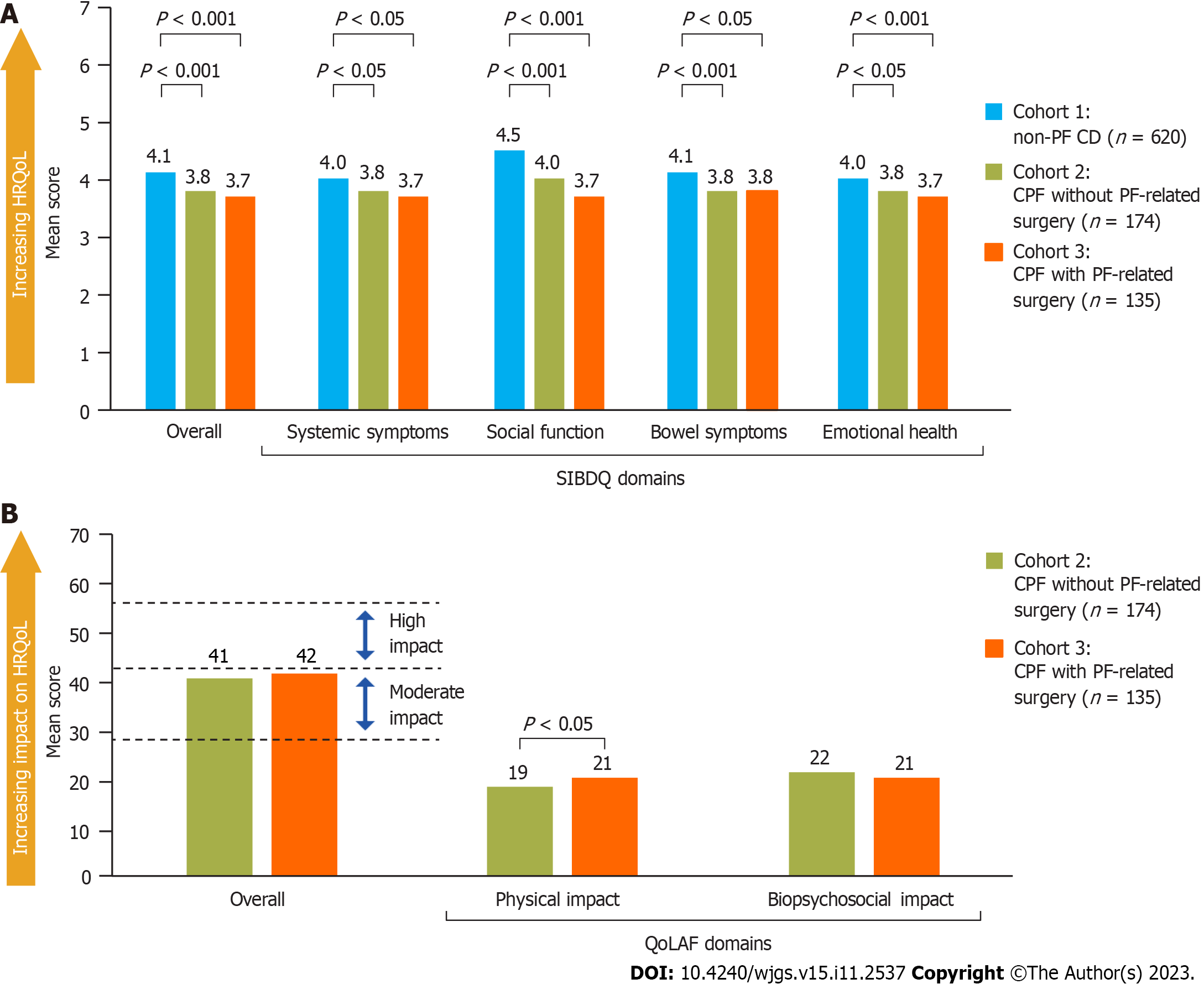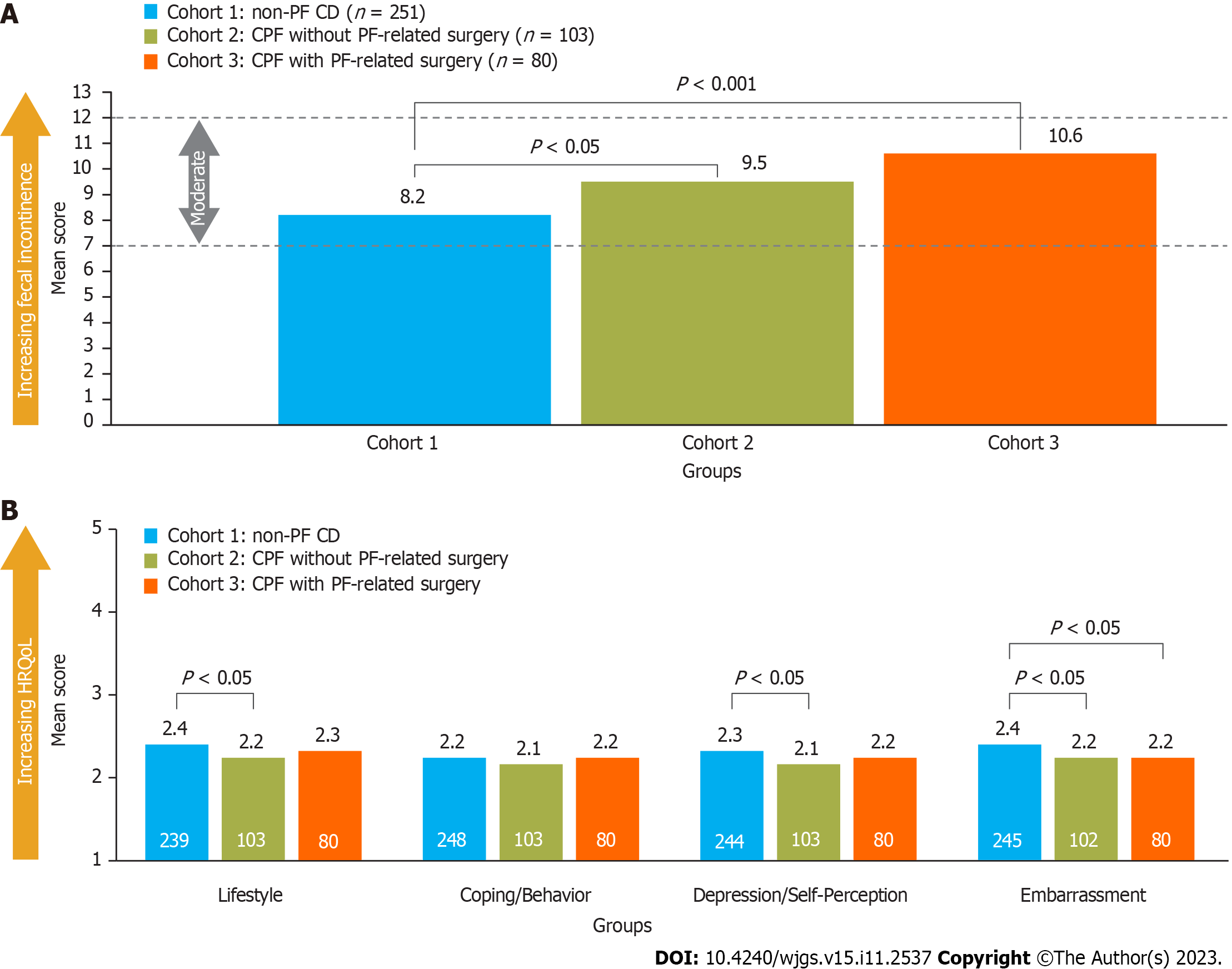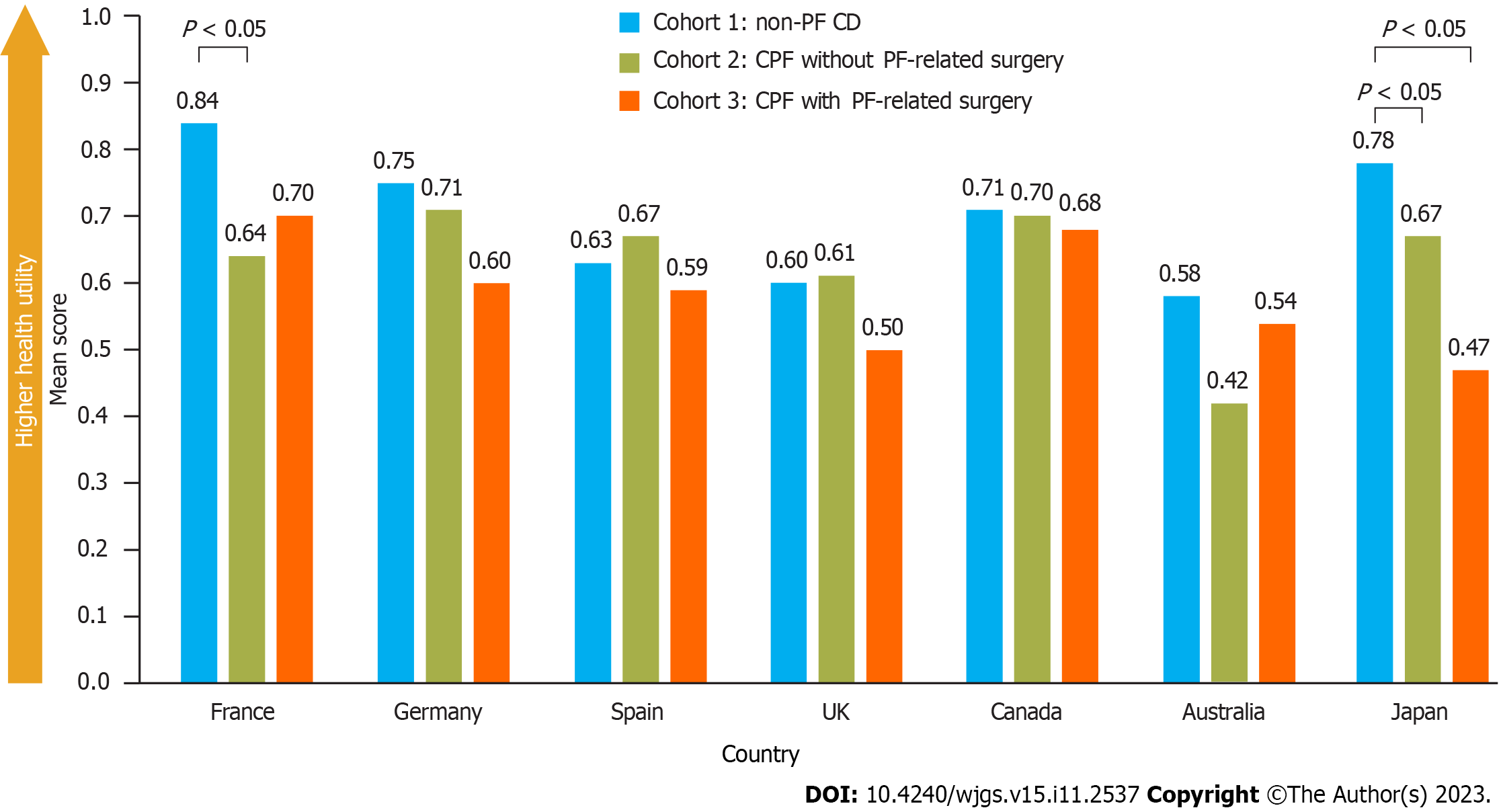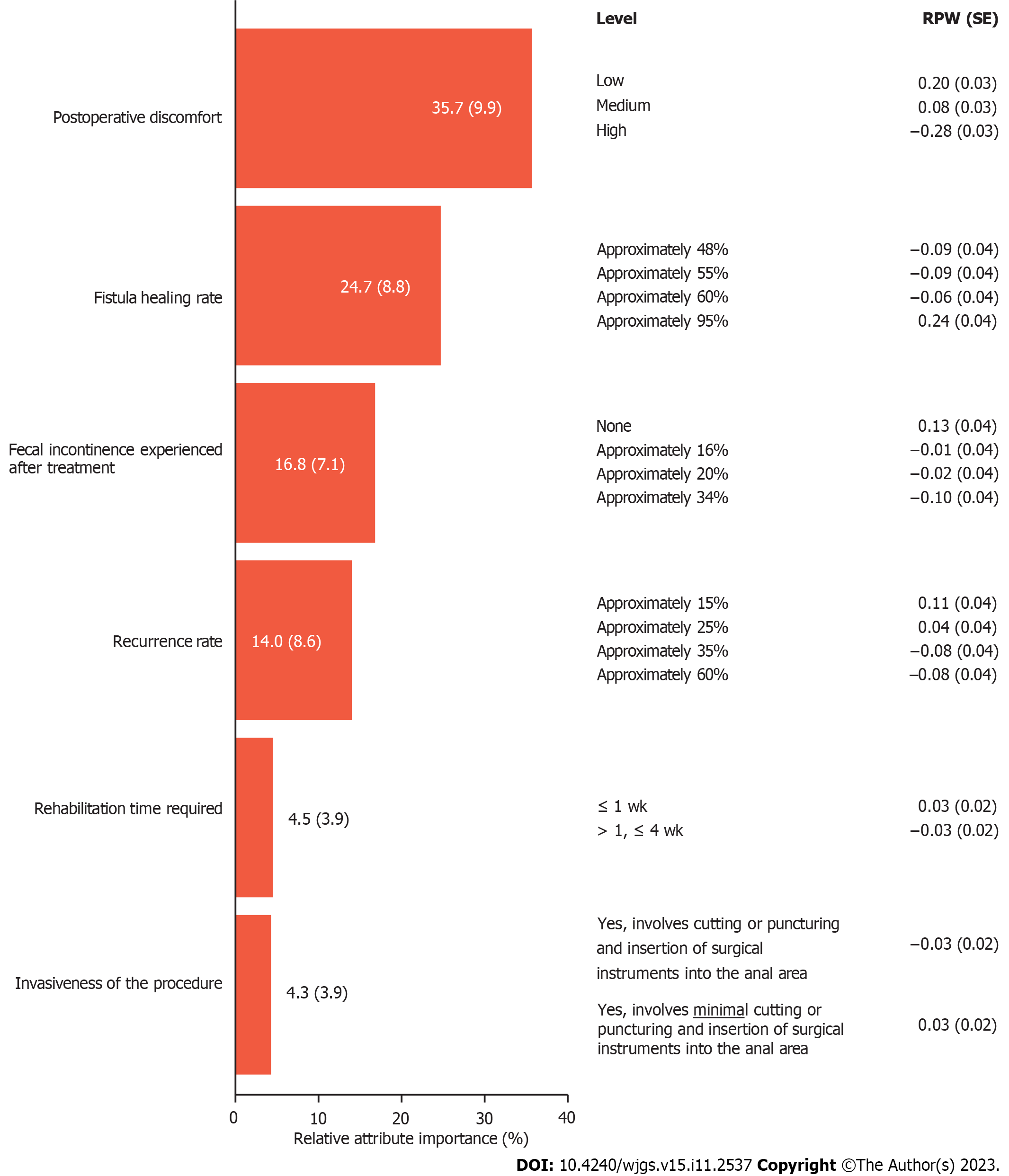Copyright
©The Author(s) 2023.
World J Gastrointest Surg. Nov 27, 2023; 15(11): 2537-2552
Published online Nov 27, 2023. doi: 10.4240/wjgs.v15.i11.2537
Published online Nov 27, 2023. doi: 10.4240/wjgs.v15.i11.2537
Figure 1 Patient disposition.
1Cohort 1: France, Germany, Spain, United Kingdom, and Canada: n = 100; Australia and Japan: n = 60; 2Cohort 2: France, n = 32; Germany, n = 17; Spain, n = 36; United Kingdom, n = 33; Canada, n = 24; Australia, n = 12; Japan, n = 20; 3Cohort 3: France, n = 18; Germany, n = 33; Spain, n = 14; United Kingdom, n = 17; Canada, n = 26; Australia, n = 17; Japan, n = 10; 4Patients received pharmacotherapy and/or seton placement but no PF-related surgery in the past 12 mo; 5With or without pharmacotherapy. CD: Crohn’s disease; CPF: Crohn’s perianal fistulas; PF: Perianal fistulas.
Figure 2 Comparison of Short Inflammatory Bowel Disease Questionnaire scores and Quality of Life in patients with Anal Fistula scores in patients with Crohn’s disease, with and without perianal fistula.
A: Short Inflammatory Bowel Disease Questionnaire (SIBDQ) scores; B: Quality of Life in patients with Anal Fistula scores. Scoring key for SIBDQ (range 1-7): Poor health-related quality of life (HRQoL) = 1 point and optimum HRQoL = 7 points. Scoring key for QoLAF (range 14-70): Zero impact = 14 points, limited impact = 15-28 points, moderate impact = 29-42 points, high impact = 43-56 points, very high impact = 57-70 points. CD: Crohn’s disease; CPF: Crohn’s perianal fistulas; HRQoL: Health-related quality of life; PF: Perianal fistulas; QoLAF: Quality of Life in patients with Anal Fistula; SE: Standard error; SIBDQ: Short Inflammatory Bowel Disease Questionnaire.
Figure 3 Comparison of Revised Faecal Incontinence Scale and Fecal Incontinence Quality of Life scores in patients with Crohn’s disease, with and without perianal fistula.
A: Revised Faecal Incontinence Scale scores; B: Fecal Incontinence Quality of Life scores. Scoring key for RFIS (range 0-20): No fecal incontinence = 0 points, very mild ≤ 3 points, mild = 4-6 points, moderate = 7-12 points, severe ≥ 13 points; scores for each item were summed and the mean taken, with lower scores indicating less fecal incontinence. Scoring key for FIQL (range 1-5): Lower scores indicating lower health-related quality of life; the minimally important difference is 1.1-1.2 points per subscale. Numbers inside the bars present the number of patients. CD: Crohn’s disease; CPF: Crohn’s perianal fistulas; FIQL: Fecal Incontinence Quality of life; HRQoL: Health-related quality of life; PF: Perianal fistulas; RFIS: Revised Faecal Incontinence Scale.
Figure 4 Comparison of EQ-5D health status scores in patients with Crohn’s disease, with and without perianal fistula.
Scoring key for EQ-5D (range 0-1): Higher scores indicate better health-related quality of life. United Kingdom, Spain, and Australia used a shortened form of the EQ-5D-5L (i.e., the EQ-5D-3L). Populations for each country for cohorts 1, 2, and 3, respectively: France, n = 100, n = 32, and n = 18; Germany, n = 100, n = 17, and n = 33; Spain, n = 100, n = 36, and n = 14; United Kingdom, n = 100, n = 33, and n = 17; Canada, n = 100, n = 24, and n = 26; Australia, n = 60, n = 13, and n = 17; Japan, n = 60, n = 20, and n = 10. CD: Crohn’s disease; CPF: Crohn’s perianal fistulas; PF: Perianal fistulas.
Figure 5 Patient-rated importance of Crohn’s perianal fistula treatment attribute options in a discrete choice experiment.
Data inside/beside bars represent relative attribute importance ± SD. Cohorts 2 + 3: n = 309. RPW: Relative preference weight; SE: Standard error.
- Citation: Karki C, Athavale A, Abilash V, Hantsbarger G, Geransar P, Lee K, Milicevic S, Perovic M, Raven L, Sajak-Szczerba M, Silber A, Yoon A, Tozer P. Multi-national observational study to assess quality of life and treatment preferences in patients with Crohn’s perianal fistulas. World J Gastrointest Surg 2023; 15(11): 2537-2552
- URL: https://www.wjgnet.com/1948-9366/full/v15/i11/2537.htm
- DOI: https://dx.doi.org/10.4240/wjgs.v15.i11.2537













